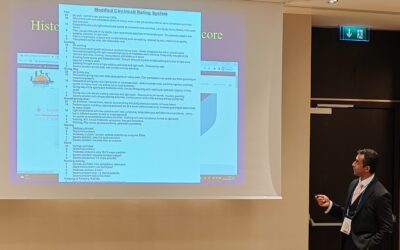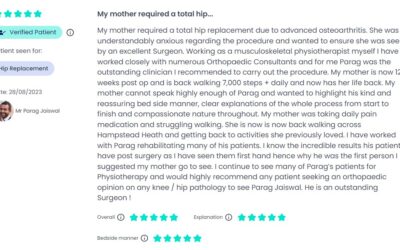The knee is one of the most complex and frequently injured joints in the body, susceptible to a variety of injuries that can limit mobility and impact quality of life. Understanding common knee injuries and their potential surgical interventions is essential for patients and healthcare providers alike. Here we discuss prevalent knee injuries and the corresponding surgical options that are available.
Meniscal Tears
The menisci are C-shaped pieces of cartilage that cushion the knee joint. Tears often occur during sports that require twisting movements or during age-related degeneration.
Surgical Intervention: Arthroscopic meniscectomy is the common procedure where the torn part of the meniscus is trimmed away. In some cases, meniscal repair might be possible, which involves stitching the torn pieces together. My aim is always to try and preserve the meniscus with a repair if possible.
Ligament Injuries
The knee has four main ligaments: the anterior cruciate ligament (ACL), posterior cruciate ligament (PCL), medial collateral ligament (MCL), and lateral collateral ligament (LCL). These can be stretched or torn, particularly during high-impact or pivoting sports.
Surgical Intervention: I perform ligament reconstruction arthroscopically (minimally invasive) as a day case procedure. For an ACL reconstruction, for instance, a graft taken from the patient’s hamstring or patellar tendon to reconstruct the torn ligament.
Patellar Dislocation
Dislocation occurs when the patella (kneecap) slips out of its normal position, often caused by a direct blow or sudden twist of the knee. Quite often, a cartilage injury can occur when this happens.
Surgical Intervention: Surgery may involve reconstructing the ligaments around the patella to stabilise it. Realignment procedures may also be necessary if the dislocation is due to an abnormality in knee structure.
Osteoarthritis
Osteoarthritis is a degenerative joint disease that results from wear and tear of the cartilage, leading to pain, swelling, and difficulty moving the joint.
Surgical Intervention: While initial treatment is often non-surgical, advanced cases may require surgical intervention. Knee arthroscopy (key hole surgery) can be used to clean out loose cartilage and smooth the joint surface. In severe cases, a partial or total knee arthroplasty (replacement) may be necessary.
Fractures
The bones around the knee, including the femur, tibia, and patella, can be fractured during falls or high-energy collisions.
Surgical Intervention: Treatment depends on the location and severity of the fracture. Surgical options include internal fixation, where hardware such as screws and plates are used to hold the bones in place, or partial or total knee replacement in the case of complex fractures.
Tendon Injuries
The quadriceps and patellar tendons can be stretched or torn, often from jumping or from direct impact.
Surgical Intervention: Tendon repair surgery involves stitching the torn tendon back to the bone. In cases of severe injury, a tendon graft may be needed.
Surgical Considerations
The decision to proceed with surgical intervention for knee injuries depends on several factors, including the type and severity of the injury, the patient’s age, activity level, and overall health. The aim is to restore function, relieve pain, and prevent further joint damage.
Recovery and Rehabilitation
Post-surgical recovery typically involves a period of rest, followed by a graduated rehabilitation programme to restore strength, flexibility, and function. The specific rehabilitation protocol will vary based on the type of surgery performed and the patient’s individual needs.
Conclusion
Knee injuries can be debilitating, but advancements in surgical techniques have significantly improved outcomes for patients. It’s important for individuals to seek professional advice for knee problems to determine the most appropriate treatment plan. For detailed information on knee injuries and the latest surgical interventions, patients can contact me, where you can book your consultation.




